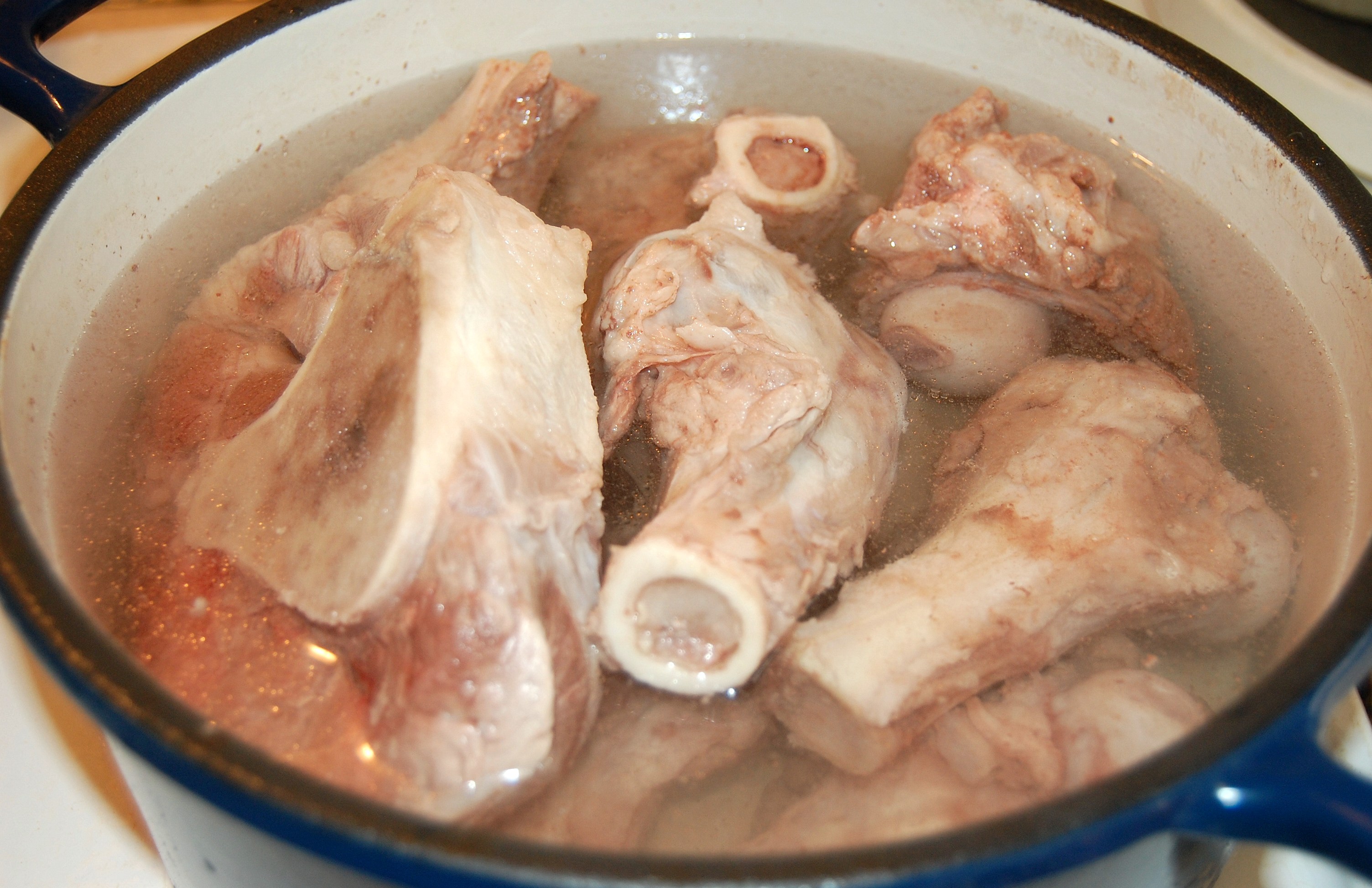Want To Know A Secret?
If you want to enjoy well-prepared meat that tastes great, the answer is simple, leave it on the bone. When cooking meat the more everything (bone, marrow, fat, skin, and other connective tissue) stays together the better. Now, this may be the main secret behind delicious and nutritious cooked meats, but there are also other rules that should be followed. I’m going to go over why cooking meat on the bone is better and what rules to follow when preparing meats. Before I get started, the better material (quality meat) you start with, the better it is for your health and the better it tastes. For that reason, make sure your meat comes from humanely and pasture raised animals.
Cooking Meat, Rule Number 1 – “Don’t Overcook It”
Why is overcooked meat tough? Its fat, protein, and sugar molecules have become tangled and fused together from the excessive heat exposure. Resulting, in tissue molecules that are bonded together which requires more work to cut, chewing, and more difficult to digest. Even worse, many of the nutrients have been ruined.
Hydrolytic Cleavage
This naturally happens when gentle heating cuts apart just enough peptide bonds to break long chain proteins into peptide segments. This creates an upper row of protein chains and a lower row of peptide segments. Meats stay moist or tender when these rows stay separated and neatly aligned. When meat dries out or is heated (internally) to over 170 degrees Fahrenheit, hydrolytic cleavage is broken. The protein chains curl and bend around themselves causing new unbreakable bonds to form between amino acids, amino acids and sugar, and amino acids and fats. These reactions destroy nutrients while making meat tough to cut and chew. These reactions, between nutrients, also form new chemical compounds including known carcinogens, such as aromatic hydrocarbons and cyclic amines, as well as other molecular compounds that damage your kidneys and blood vessels.
Rule #2 – “Use moisture, Time, and A Variety of Tissue Types” (Ligaments, Bone, Fat, Skin, Etc.)
Chefs usually aren’t aware of this but when they say “some flavors take time to develop,” they are essentially saying sometimes you have to wait for certain nutrients to be released. How do flavorless chicken parts turn into something delicious when heated? Again, hydrolytic cleavage. When heated gently, water molecules gently tenderize even the toughest tissues. How does hydrolytic cleavage affect taste? In the process of hydrolytic clea, age some proteins are chopped into very small segments, creating shortened segments called peptides. These peptides are tiny enough to fit into the receptors on our taste buds, thus allowing you to taste their Umami flavor.
Additional Nutrients, Including Glycosaminoglycans
By adding all the additional parts (skin, ligaments, fat, etc.) you are getting additional nutrients. Water molecules pull apart connective tissue in skin, ligaments, cartilage, and even bone. This releases a very special family of molecules known as glycosaminoglycans, important complex carbohydrates that participate in many biological processes.3 Their primary role is to maintain and support collagen, elastin, and turgidity (bounce) in the cellular spaces and keep protein fibers in balance and proportion. Slow-cooked meats are also more nutritious because they contain more minerals. Mineral salts are release from bone, cartilage, and the meat itself during stewing. These tissues are rich in calcium, potassium, iron, sulfate, phosphate, sodium, and chloride. Overcooking on the other hand, traps these nutrients in an indigestible matrix of polymerized flesh that forms when meat begins to dry out.
Rule #3 – “Use the fat”
I can’t stress this enough we need to eat fat, especially with meat. This includes animal meats which have been shunned by some. Though we need to make sure the animal that fat came from was pastured -raised on grass and not an animal that is sick, was raised in a CAFO, and fed grain. Pasture-raised beef, for example, has all kinds of advantages over its grain-fed counterpart. It is higher in Omega-3 content, a much better source of bone-building vitamin K2, and contains on average 2 to 3 times more anti-inflammatory conjugated linoleic acid (CLA). 4 But in order to absorb that omega-3, K2, and CLA, you have to get meat with an exterior layer of fat (or liver or the bone marrow).
Want More of the Nutritional Benefits of Consuming Fat?
For one, fat can be a source of energy when converted to ketones by the liver. Fat comprises 30 to 80 percent (dry weight) of our cell membranes making it a major building material for our cells. Unlike sugar, our other energy source, fat doesn’t trigger the release of insulin, which promotes weight gain. We also need fat to absorb most fat-soluble nutrients, including vitamins A, D, E, and K.5,6 Furthermore, the presence of fat in meat also helps protect it during cooking, let’s just call that a bonus.
- https://www.researchgate.net/publication/44625850
- https://www.researchgate.net/publication/6695017_
- https://www.ncbi.nlm.nih.gov/pubmed/19090915
- https://www.ncbi.nlm.nih.gov/pmc/articles/PMC2846864/
- http://ajcn.nutrition.org/content/80/1/3.full
- https://www.researchgate.net/publication/15070574_Absorption_and_transport_of_carotenoids
Fact of the Week
Studies have shown that Glucosamine, a member of the glycosaminoglycan family of joint-building molecules. Is somehow able to resist digestion and pass through the intestinal wall intact.20
Though nobody can really explain how, once it passes through the intestinal wall into our bloodstream, glucosamine has a special tropism for cartilage.20 (A fancy way of saying “somehow, it knows just where to go.”) Glucosamine can even stimulate the growth of new, healthy collagen and may help repair damaged joints.21
Collagen is also in our bones, skin, arteries, hair, and just about everywhere in between. This means that bone broth that is rich in glucosamine is capable of rejuvenating our bodies, as a kind of youth serum.

